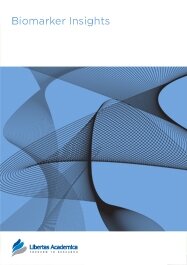

Publication Date: 20 May 2010
Type: Methodology
Journal: Biomarker Insights
Citation: Biomarker Insights 2010:5 49-55
doi: 10.4137/BMI.S5062

It is unclear if buccal cell samples contain sufficient human DNA with adequately sized fragments for high throughput genetic bioassays. Yet buccal cell sample collection is an attractive alternative to gathering blood samples for genetic epidemiologists engaged in large-scale genetic biomarker studies. We assessed the genotyping efficiency (GE) and genotyping concordance (GC) of buccal cell DNA samples compared to corresponding blood DNA samples, from 32 Nurses’ Health Study (NHS) participants using the Illumina Infinium 660W-Quad platform. We also assessed how GE and GC accuracy varied as a function of DNA concentration using serial dilutions of buccal DNA samples. Finally we determined the nature and genomic distribution of discordant genotypes in buccal DNA samples. The mean GE of undiluted buccal cell DNA samples was high (99.32%), as was the GC between the paired buccal and blood samples (99.29%). GC between the dilutions versus the undiluted buccal DNA was also very high (.97%), though both GE and GC notably declined at DNA concentrations less than 5 ng/µl. Most (.95%) genotype determinations in buccal cell samples were of the “missing call” variety (as opposed to the “alternative genotype call” variety) across the spectrum of buccal DNA concentrations studied. Finally, for buccal DNA concentration above 1.7 ng/ul, discordant genotyping calls did not cluster in any particular chromosome. Buccal cell-derived DNA represents a viable alternative to blood DNA for genotyping on a high-density platform.
PDF (563.62 KB PDF FORMAT)
RIS citation (ENDNOTE, REFERENCE MANAGER, PROCITE, REFWORKS)
BibTex citation (BIBDESK, LATEX)
XML
PMC HTML

I would like to extend my gratitude for creating the next generation of a scientific journal -- the science journal of tomorrow. The entire process bespoke of exceptional efficiency, celerity, professionalism, competency, and service.

All authors are surveyed after their articles are published. Authors are asked to rate their experience in a variety of areas, and their responses help us to monitor our performance. Presented here are their responses in some key areas. No 'poor' or 'very poor' responses were received; these are represented in the 'other' category.See Our Results
Copyright © 2014 Libertas Academica Ltd (except open access articles and accompanying metadata and supplementary files.)
Facebook Google+ Twitter
Pinterest Tumblr YouTube